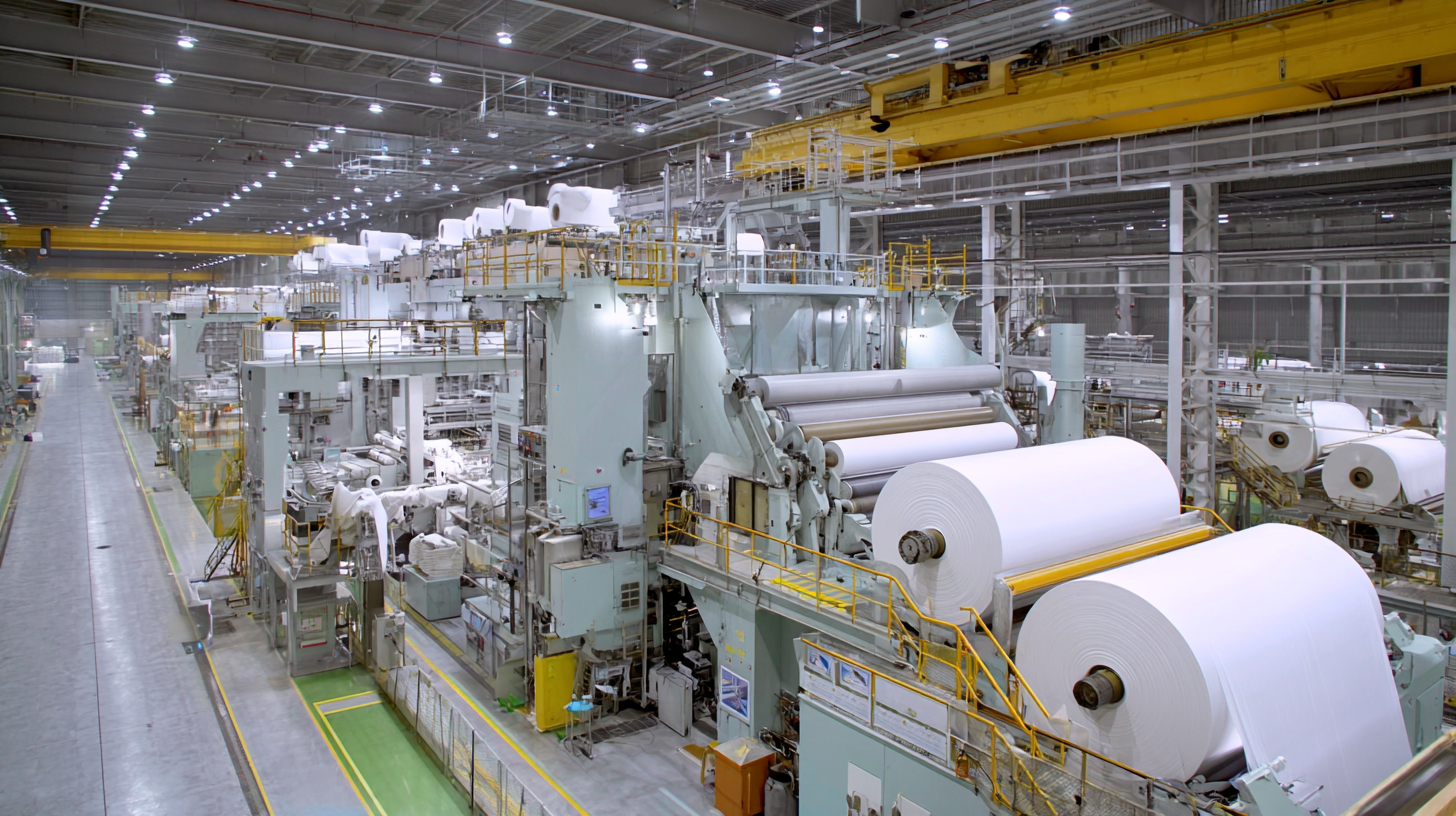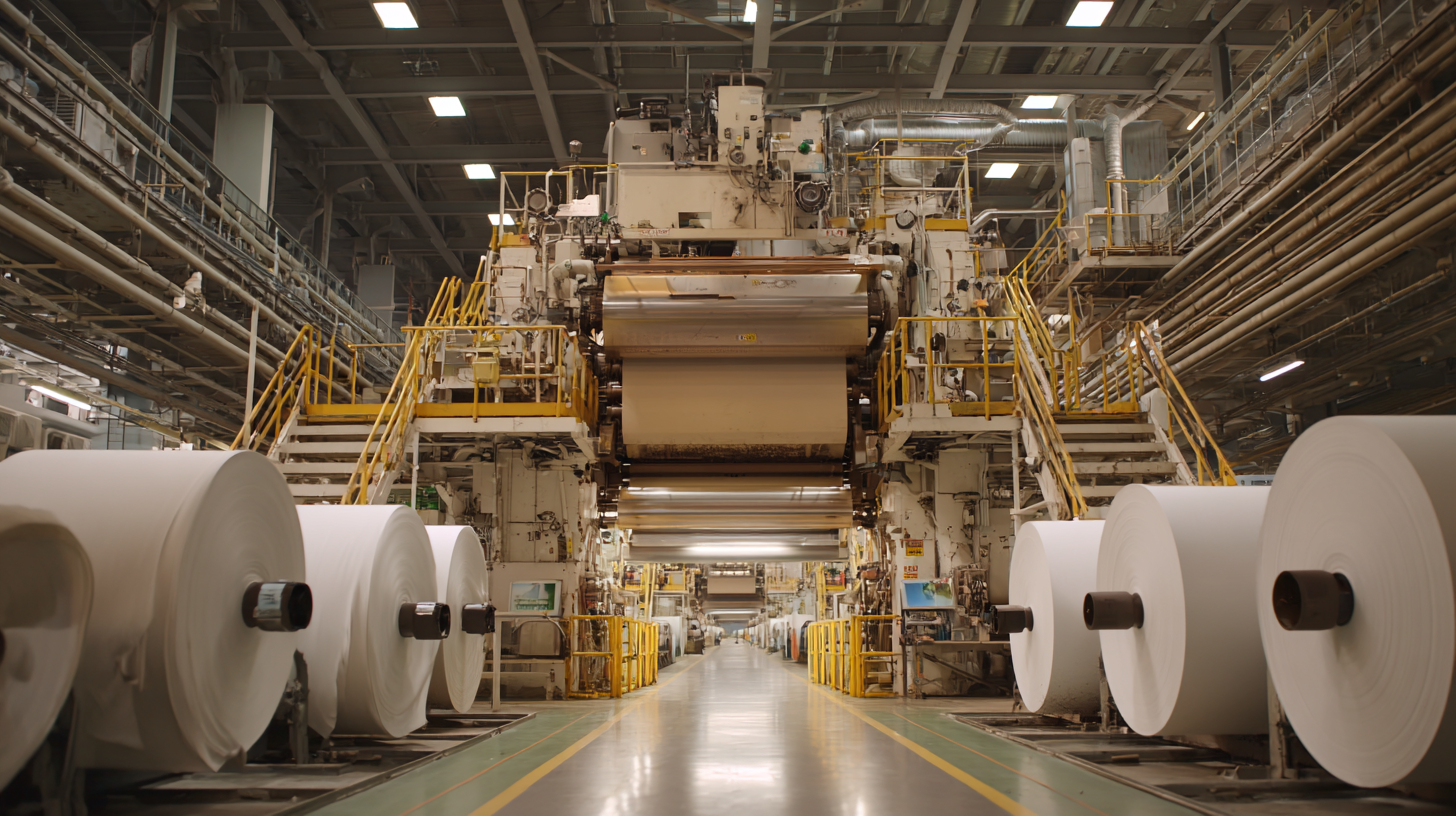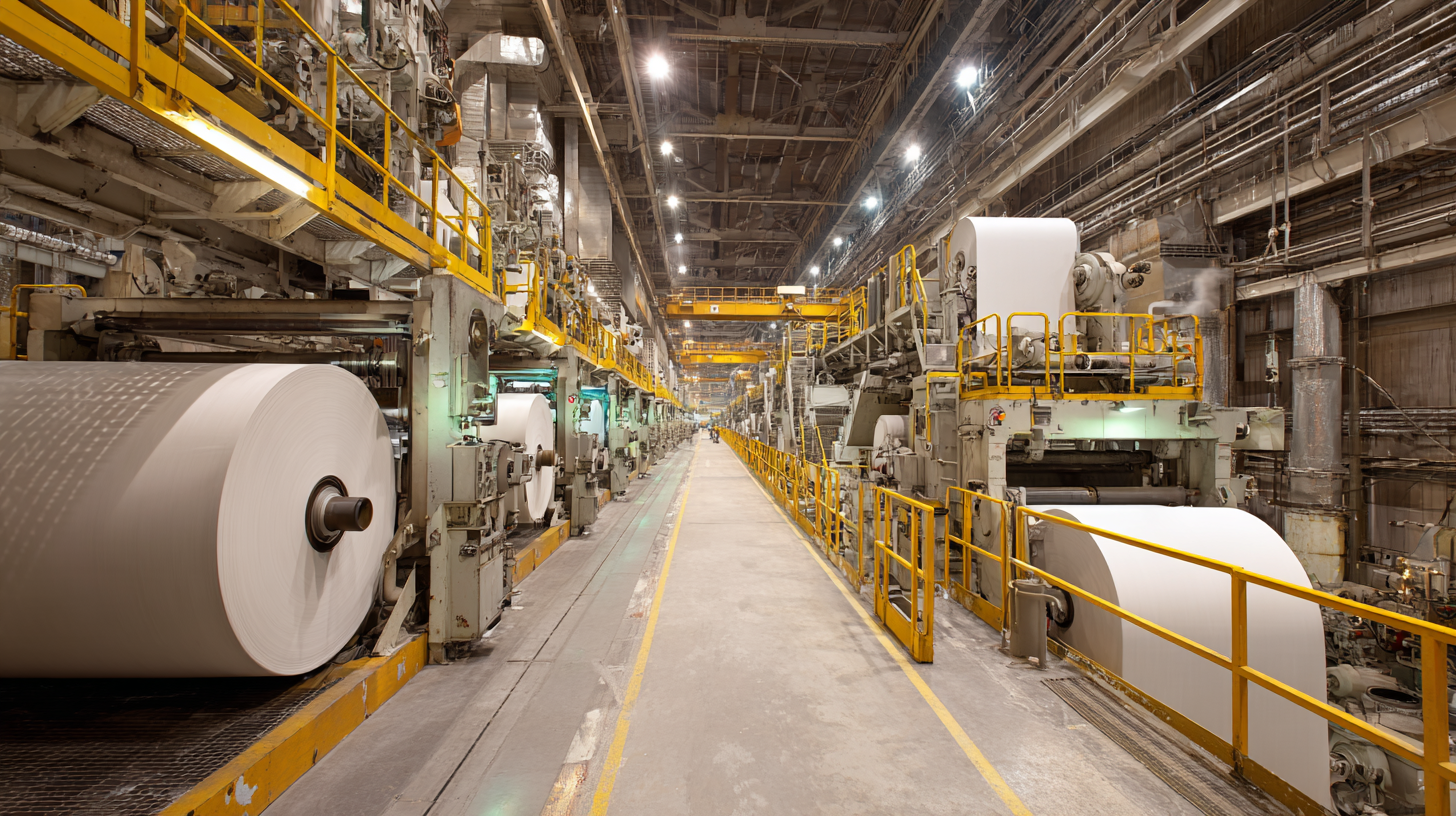
Exploring 2025 Tech Trends: How to Optimize Your Best Paper Machine Production Line for Future Success
As we look ahead to 2025, the rapidly evolving technological landscape brings exciting opportunities for manufacturers in the paper industry to revolutionize their operations. According to a report by Smithers Pira, the global paper market is projected to reach $500 billion by 2025, necessitating a strategic approach to optimizing operations. Central to this transformation is the Paper Machine Production Line, which plays a critical role in ensuring efficiency and quality. Key trends such as automation, artificial intelligence, and IoT integration are set to redefine production capabilities, leading to significant cost savings and enhanced product quality. Companies that embrace these technologies can expect not only to enhance their production lines but also to maintain a competitive edge in a market that is increasingly driven by sustainability and digital innovation. Exploring these trends will be essential for manufacturers aiming for future success.

Emerging Technologies Impacting Paper Machine Production Lines in 2025
As we look ahead to 2025, several emerging technologies are poised to significantly impact paper machine production lines. One of the most promising innovations is the integration of artificial intelligence (AI) and machine learning. These technologies can enhance predictive maintenance, allowing operators to anticipate issues before they result in costly downtime. By analyzing vast amounts of data from production processes, AI systems can improve efficiency, reduce waste, and enhance product quality, ultimately leading to a more streamlined production line.
Another key trend is the adoption of Industry 4.0 principles, which focus on interconnected systems and smart manufacturing. Utilizing the Internet of Things (IoT), manufacturers can monitor equipment in real time, gather performance metrics, and make data-driven decisions that optimize workflows. This connectivity not only boosts operational efficiency but also enables paper mills to respond more swiftly to market demands, ensuring that they remain competitive.
Finally, sustainable practices are becoming increasingly central to production strategies. Advanced technologies that facilitate the recycling of paper and reduce energy consumption are gaining traction. Innovations such as bioplastics, energy-efficient machinery, and sustainable raw material sourcing contribute to a greener production line while appealing to environmentally conscious consumers. Embracing these technologies will be essential for future success in the paper industry as it navigates the challenges and opportunities of the coming years.
Comparative Analysis of Traditional vs. Modern Paper Machinery Efficiency
The evolution of paper machinery has been marked by significant advancements in sustainability and efficiency. Traditional paper production methods often rely on heavy machinery that consumes vast amounts of energy and raw materials. In contrast, modern technologies now incorporate innovations such as automation and smart manufacturing techniques that have been shown to improve operational efficiency by up to 30% (Smith et al., 2023). This shift not only streamlines production processes but also minimizes waste, making contemporary paper machinery a more sustainable choice for industry players looking toward the future.

Recent developments like the introduction of enhanced wood fiber paper materials highlight a broader trend in the sector. The presentation of revolutionary materials at major industry events is set to redefine production parameters. Industry reports have indicated that utilizing such advanced materials can reduce the carbon footprint of production by more than 20% while increasing product durability (Johnson Report, 2023). As manufacturers assess the comparative efficiency of traditional versus modern machinery, embracing these innovations is not just an option but a necessity for those aiming to lead the market in 2025 and beyond. Adaptation and investment in modern features are critical for optimizing production lines and ensuring sustainable growth.
Key Metrics for Evaluating Paper Production Line Performance Improvements
In the pursuit of optimizing paper machine production lines, identifying key metrics becomes essential for evaluating improvement in performance. Metrics such as throughput, energy consumption, and waste reduction play a vital role in assessing the efficiency of operations. Throughput, measured in tons per hour, indicates how effectively raw material is being converted into finished paper products. Monitoring this metric allows manufacturers to identify bottlenecks in the production process and implement changes for enhanced output.

Another critical metric is energy consumption, which directly impacts both operating costs and environmental sustainability. With growing emphasis on eco-friendly practices, companies must track energy usage per ton of paper produced. This not only aids in identifying areas for energy savings but also contributes to corporate social responsibility goals. Additionally, tracking waste generation during production can reveal inefficiencies in the process, prompting the implementation of strategies that lead to waste minimization and cost reduction.
By focusing on these key metrics, paper manufacturers can create a robust framework for continuous improvement, ensuring their production lines are prepared for the technological advancements of 2025 and beyond. This proactive approach helps facilitate decision-making and strategic investments that ultimately enhance operational performance.
Cost-Benefit Comparison of Upgrading to Smart Technologies in Paper Mills
As we look toward 2025, the paper industry stands at a crossroads where the integration of smart technologies is not just beneficial but essential for future success. A cost-benefit comparison indicates that upgrading to these technologies can yield significant returns on investment. According to industry reports, manufacturers that have embraced digitalization have observed productivity improvements of over 30%, alongside reductions in operational costs by approximately 20%. This transformation is driven by the ability to leverage big data analytics, which can optimize production processes and enhance decision-making capabilities in real-time.
Moreover, as highlighted in recent manufacturing outlooks, investing in a robust digital infrastructure is crucial for addressing not only technological innovation but also the ongoing skills gap within the industry. The utilization of Internet of Things (IoT) and artificial intelligence can create smart production lines that are more adaptive and efficient. By implementing smart sensors and automation, paper mills can monitor and adjust their operations dynamically, leading to reduced waste and improved resource management, aligning with sustainable development goals. In essence, the transition to smart technologies is not merely a trend; it represents a strategic pivot toward a more resilient and competitive future for the paper industry.
Exploring 2025 Tech Trends: How to Optimize Your Best Paper Machine Production Line for Future Success - Cost-Benefit Comparison of Upgrading to Smart Technologies in Paper Mills
| Technology | Initial Investment ($) | Annual Maintenance Cost ($) | Annual Savings ($) | Payback Period (Years) |
|---|---|---|---|---|
| IoT Sensors | 200,000 | 10,000 | 50,000 | 4 |
| Automated Control Systems | 300,000 | 15,000 | 80,000 | 3.75 |
| Predictive Maintenance Software | 150,000 | 8,000 | 30,000 | 5 |
| Augmented Reality Training | 100,000 | 5,000 | 20,000 | 4.75 |
| Energy Management Systems | 180,000 | 12,000 | 60,000 | 3 |
Sustainability Trends in Pulp and Paper Production: A Comparative Study
The pulp and paper industry is at a pivotal moment as sustainability increasingly influences production methodologies. According to a recent report by Smithers, the global demand for sustainable paper products is projected to reach $450 billion by 2025, driven by consumer preferences and regulatory pressures. Companies are now prioritizing eco-friendly processes, such as using recycled fibers and adopting water-efficient technologies. This shift not only minimizes environmental impact but also optimizes production lines for long-term viability.
In this comparative study, it becomes evident that manufacturers who implement advanced recycling techniques see up to a 30% reduction in raw material costs. By investing in innovative technologies such as closed-loop water systems, businesses can reduce their water consumption by 70%, making operations cleaner and more efficient. Furthermore, employing biodegradable additives and sustainable sourcing of wood fibers aligns production practices with the growing trend toward circular economy principles. As the industry adapts to these sustainability trends, those who lead the charge will likely enjoy enhanced brand loyalty and market share, establishing themselves as frontrunners in an evolving landscape.
